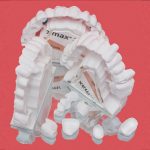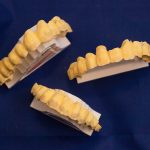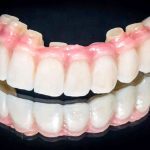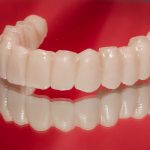Dental Implant Restoration Services for Dental Professionals
Click on an image to see full size
When it comes to dental implants restorations we help all other dental professionals overcome the challenges these restorations present!
- Oral Surgeons
- Periodontists
- General Practitioner’s (GP’s)
- Prosthodontists
In most dental practices today, the dental implant procedure entails…
1. The case selection by a General Practitioner or Prosthodontist, then…
2. Referral to an oral surgeon or periodontist for the surgical procedure, and then…
3. Finally, the patient is then sent back to the GP for the temporary and permanent restoration.
When it involves different practices, different doctors, and one dental lab, many errors in communication can occur with devastating results on the final restoration and the overall patient experience as well as the perceived value. Over the many years of experience in implant dentistry, especially full arch reconstruction, we noticed the most common problems are:
- Familiarity with Implant Systems: The GP, even if a very talented and caring doctor, is not familiar with the implant system the oral surgeon or the periodontist is using. The patient is sent back for restoration and the GP is instructed to contact the implant representative for that specific implant system. The implant representative is trained to sell implants, not to help a doctor. And sometimes the representatives are very new in the field and with a non-dental background. This leaves the best of GP’s with help that is only as good as the representative they talked with.
- Familiarity with Restorative Procedures: The surgical doctor is not too familiar with the restorative aspect of the procedure. So many times, the implants are placed in a position that is not driven by the future prosthesis and then the GP is stuck in restoring a non-ideal situation. The GP expects some restorative advice from the surgical provider, but that advice never comes other than to contact the implant system representative.
- Implant Restorations: The GP or the surgical provider will contact their regular dental lab to manufacture the actual prosthesis prior to beginning an implant restoration. Very few dental labs have enough experience and knowledge to do that, especially when it comes to full arch restorations. They do not like to admit it, but most commercial labs do one maybe two full arches per year and that is usually accompanied by a lot of effort and cost. So, it comes down to the lab expecting instructions from the GP on what to do exactly while the GP is expecting recommendations from the lab on what components, materials and strategies to use.
This rarely ends well for everyone involved especially the patient!
There are many documented cases in which restoring a full arch on implants took about 3 years to complete. That amount of time to receive a final set of teeth is unfathomable for anyone accept especially the patient; not to mention the cost to both the GP and patient in time, money and value. - Unforeseen Issues: In the event something goes wrong like an abutment breaking, abutment screw stripping, prosthetic screw breaking, implant fracture, frame fracture, or other mechanical failures; there is no real support from the implant companies. When contacted about the situation, they all have the same script “Oh…, that’s weird, we never had this situation with anyone else.” That does not help you or your patient. The implant manufacturer may try to suggest what to do next, usually something that the practitioner already tried and did not work; or a recommendation that makes the situation much worse than the original.
Of course, there are many other problems that may arise, but most fall into one of the four categories mentioned above.


































